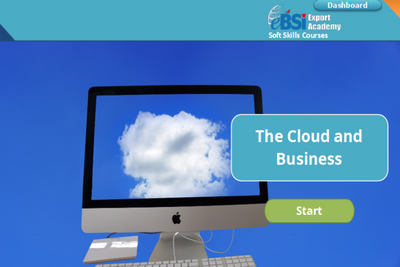Electronic Customer Relationship Management

Simple Tips for Increased Customer Satisfaction
After the bombardment of Literature, Case Studies and Reports on CRM, eCRM is now receiving the same, if not more attention. But what does it mean for your business? You’ve become strongly customer focused, you have a website and now you have to contend with eCRM? Does this require vast investment in new Customer Management Software, expensive integration of such systems with your website?
Possibly, but not necessarily. There are many organisations that will require a large investment in eCRM strategies and technologies, however most companies can take a very cost effective approach to eCRM.
eCRM
CRM (Customer Relationship Management) is a term used to describe methodologies, strategies and software used to help organisations manage customer relationships.
eCRM (electronic Customer Relationship Management) simply refers to web-based strategies and capabilities that allow an organisation to manage these relationships.
Definitions will vary; however there is always a fundamental understanding that CRM or eCRM is more about the culture of an organisation rather than that organisation’s technological capability. eCRM simply implies that everyone in the organisation is focused on the customer. This is not a new concept; it has been in existence for generations. It is just good business practice – looking after your customers breeds loyalty, which in turn leads to increased revenue, increased referrals and reduced customer retention cost.
But while this seems relatively easy in theory how can we put it into practice online?
Going Live with eCRM
First of all, your organisation has to have a culture of CRM. If this is in place then applying it to your Internet Strategy will give you an increased chance of success.
For example, if you are going to make a commitment through your website to deal with all customer queries quickly and efficiently, then this must simply be done and all Internet queries should be handled with the same urgency as phone or face-to-face queries. If you tell your customers on your website that they will have a response to their query in 12 hours, then make sure that the internal process in your organisation allows you to do this. It is vital that the simple things like dealing with customer queries and keeping your website content updated are done well.
Your website should make it easy for your customers to interact with you. Unless you realise the importance of providing such a facility and maintaining quick response times then the result will be customer frustration, which could very well lead to lost customers – the opposite of what eCRM aims to achieve. Provide your contact details on every page and make sure your Contact Form is easy to find and easy to fill out. Feedback should always be solicited, however make sure that your customer is not forced to fill out an entire questionnaire every time they want to make a simple query with you.
Regular contact is key in retaining your customers online. Provide your website customers the option of subscribing to e-zines (electronic magazines), special offer bulletins, competition announcements, etc. This not only keeps you top of mind with your customers but also provides you with the chance to obtain valuable marketing information for future use.
Incentive to Return
Offer your customers an incentive to return. There is a vast number of websites out there, many of which are indistinguishable from each other and many of which provide the same service and offer the same products, resulting in relatively little customer loyalty and fewer repeat purchases. A key aspect in eCRM is to entice visitors to keep returning to the site, increasing visitor familiarity with the site and ultimately leading to repeat purchases.
An example of an incentive to return is to run a competition on your site and requiring the visitor to return to your site to find out if they’ve won. The visitor may return to the site a couple of times to see if they’ve won, while at the same time becoming more familiar with the site, spotting new competitions to enter, interesting information or perhaps spotting products that they may have an interest in purchasing.
Provide them with that bit extra on your website. It can be anything from special offers, discounts and competitions to extra information. These extra services can be important as they will encourage the visitor to return to your website as long as they do not detract from the purpose of the website. Sticky content websites which entice the visitor to return to get the latest updated information again achieve its objective of getting the visitor to return to the site, to become familiar with the site and ultimately make a purchase or become a customer.
Yet another example would be to offer membership and membership benefits such as increased access to information, loyalty points, etc. Each and every time a customer logs into the membership section you can continue to build up your profile of that customer and present to them the information that is most relevant and useful to them.
By managing the relationship with your customers, you can increase customer loyalty and customer referrals. Regular contact and quick responses to queries will prompt visitors to return to your site.
A wealth of information can be obtained from visitors to your website by analysing their moves through the website and their queries via the site. This information can be hugely important for future target marketing and in developing improvements to the site based on customer needs and wants.






